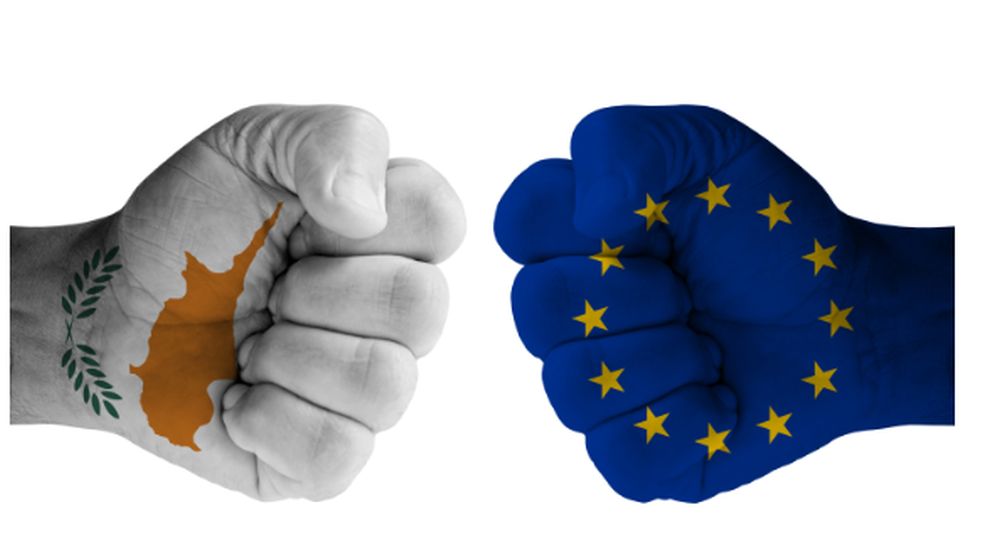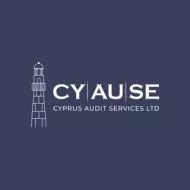- within Corporate/Commercial Law topic(s)
- in United States
- with readers working within the Media & Information industries
- within International Law, Immigration and Intellectual Property topic(s)
What are the Controlled Foreign Company (CFC) rules and how they affect Cyprus
🔹 What are CFC Rules?
- Definition: A Controlled Foreign Company (CFC) is usually a foreign subsidiary controlled by local shareholders (often >50% ownership by residents of the parent company's country).
- Purpose: Without CFC rules, a company could shift profits to a low-tax country and only pay tax when bringing those profits home (deferral). CFC rules aim to tax certain undistributed foreign income immediately in the parent company's jurisdiction.
- Mechanism:
- Identify whether a foreign subsidiary is a CFC (based on ownership/control thresholds).
- Assess if the subsidiary's income is "tainted" (passive, mobile, or artificially shifted).
- Attribute this income to the parent company and tax it locally.
🔹 Core Features of CFC Regimes
- Control Thresholds: Usually 25%–50% ownership by local shareholders.
- Income Tests:
- Active income (real operations) often excluded.
- Passive income (interest, royalties, dividends, IP, intra-group financing) usually included.
- Low-Tax Threshold: Some countries only apply CFC rules if the foreign entity is taxed below a certain effective rate (e.g., <50% of domestic tax).
- Exemptions:
- Substantial business activities test.
- Listed countries (white/blacklists).
- De minimis income thresholds.
🔹 Countries with CFC Rules
CFC rules are widespread, especially after the OECD BEPS Action Plan (Action 3) encouraged adoption.
Examples by region:
Europe
- EU: All EU member states must have CFC rules (ATAD – Anti-Tax Avoidance Directive, effective since 2019).
- Countries: Germany, France, Italy, Spain, Netherlands, Ireland, Denmark, Sweden, Poland, Hungary, etc.
North America
- United States: Subpart F rules (since 1962), plus GILTI regime (since 2018).
- Canada: Foreign Accrual Property Income (FAPI).
- Mexico: Applies to income from low-tax jurisdictions.
Asia-Pacific
- Japan: Has CFC rules with active business exemptions.
- South Korea: CFC regime for low-tax jurisdictions.
- Australia: CFC rules since 1990s.
- New Zealand: Similar regime but narrower (foreign investment fund rules too).
- China: CFC rules exist but more selectively enforced.
Latin America
- Brazil, Chile, Argentina, Colombia: Have CFC rules (with variations).
Middle East & Africa
- Historically rare, but adoption is growing.
- South Africa: CFC rules since 2001.
- Other jurisdictions: Limited but expanding as BEPS reforms spread.
🔹 Where CFC Rules Do Not Apply
- Many tax havens (e.g., Cayman Islands, Bermuda, British Virgin Islands, UAE until recently) do not impose CFC rules because they don't tax corporate income at all. --> Cyprus is not affected as it is not considered a tax heaven.
Summary:
CFC rules are now standard in most developed
economies and increasingly in emerging ones, especially
after the OECD BEPS project and EU's ATAD. They generally apply
to foreign subsidiaries controlled by local
taxpayers in low-tax jurisdictions with
mainly passive or artificially shifted income.
Yes — Cyprus does impose CFC rules, but only since January 1, 2019, when it implemented the EU Anti-Tax Avoidance Directive (ATAD I).
Here's the key outline of the Cyprus CFC regime:

🔹 Cyprus CFC Rules
- Effective date: From 1 January 2019 (ATAD compliance).
- Control test:
- A foreign entity (company or permanent establishment) is considered a CFC if a Cypriot tax resident company (alone or together with associated enterprises) holds >50% ownership, voting rights, or profit entitlement.
- Low-tax test:
- The foreign entity must be subject to an effective tax rate < 50% of the tax that would have been payable in Cyprus.
- Income attributed:
- Only non-distributed income arising from non-genuine arrangements is included (i.e., where the CFC does not perform significant economic activity with people, premises, and assets).
- In practice, this usually means passive/mobile income (interest, royalties, dividends, intra-group financing).
- Exemptions:
- If the CFC has substantial economic activity, demonstrated through staff, assets, and premises, its income is not attributed.
- De minimis threshold: If accounting profits < €750,000 and non-trading income < €75,000, the rules don't apply.
🔹 Practical Impact in Cyprus
- Before 2019, Cyprus was seen as CFC-friendly (no such rules).
- The introduction of CFC rules was largely formal compliance with EU law.
- In practice, many Cyprus structures still remain attractive
because:
- The CFC rules are narrowly applied (focus on non-genuine, passive income).
- Cyprus has a 12.5% corporate tax rate and extensive double tax treaty network.
- Active trading subsidiaries are usually not affected.
Summary: Cyprus does have CFC rules, but they are relatively light-touch and mainly target artificial profit-shifting to low-taxed passive subsidiaries without real activity (real trading subsidiaries, holding companies with substance, small/low-profit entities) are unlikely to be caught.
Why Cyprus' CFC rules are relatively "light touch"
1) They follow the ATAD Model B / "non-genuine arrangements" approach
Cyprus implemented the EU Anti-Tax-Avoidance Directive (ATAD) using the Model B approach — that means a CFC charge only arises where (a) the foreign entity is low-taxed and (b) the income results from non-genuine arrangements (i.e., arrangements lacking valid commercial reasons, where the Significant People Functions (SPFs) that generate the income are performed elsewhere). That is a much narrower trigger than blanket attribution of all passive income.
2) Two-fold test: control + low-tax and non-genuine
Cyprus requires (i) a control test (direct/indirect >50% holding or rights) and (ii) a low-tax test (the effective tax actually paid by the foreign entity is less than 50% of the tax that would have been payable in Cyprus). On top of that, the income must come from non-genuine arrangements to be attributed. Because all three elements are needed, many real, substance-based subsidiaries simply fall outside the net.
Practical note on the low-tax threshold: Cyprus' statutory CIT is 12.5%, so "less than 50% of Cyprus tax" implies an effective tax-rate threshold of about 6.25%. Entities taxed above that effective level generally won't be "low taxed" for the CFC test.
3) Substantial-activity (SPF) carve-out — you must look where the value is created
If the CFC performs real economic activity (people, premises, assets) and carries out the Significant People Functions that generate the profits, the arrangement is treated as genuine and the CFC rules do not bite. In other words, simply placing staff, decision-makers, IP development, contracts and real operations in the foreign entity (and documenting them) generally prevents attribution. The law actually limits attribution to the portion of CFC profits that are linked to assets/risks for which Cyprus SPFs are responsible. That requires a transfer-pricing style analysis — another friction point for tax authorities.
4) De-minimis and low-profit safe harbours
Cyprus implements ATAD's de-minimis tests. A CFC inclusion does not apply where, for example, the CFC's accounting profits ≤ €750,000 and its non-trading income ≤ €75,000, or where accounting profits are ≤ 10% of operating expenses. Those thresholds exclude many small or operational subsidiaries.
5) Attribution is limited, time-bound and double-tax relief exists
Only non-distributed profits are at risk (i.e., accounting profit after tax that has not been distributed to the Cyprus parent within the same tax year or within the following seven months). Where profits are later distributed or taxed abroad, double tax relief rules/credits and adjustments can mitigate or remove double taxation. The inclusion amount is also limited to the share of profit attributable (by arm's-length allocation) to the Cyprus SPFs — not a full, blunt top-line amount. That technical allocation requirement reduces scope in practice.
What this means in plain terms (practical examples)
Likely not caught:
- A fully fledged trading subsidiary in Country X with employees, office, sales, and local contracts (substance + local tax > ~6.25%).
- A small SPV whose profits are minor (below the €750k/€75k safe harbours).
Likely at risk:
- A bare IP/royalty box or financing entity in a 0–1% tax haven with no staff, premises or real activity, whose profits are retained (not distributed). That fits the control + low-tax + non-genuine pattern the rules target.
Bottom line
Cyprus' CFC rules exist and must be respected, but lawmakers chose the narrow ATAD Model B route: the rules target artificial profit shifting (low-taxed, substance-less entities) rather than ordinary, substance-based holding or trading companies. That combination of the SPFs (substance) test, de-minimis safe harbours, the >50% control plus relative low-tax threshold, and limited attribution means many typical Cyprus structures remain unaffected—provided they have real activity and proper documentation.
The content of this article is intended to provide a general guide to the subject matter. Specialist advice should be sought about your specific circumstances.


